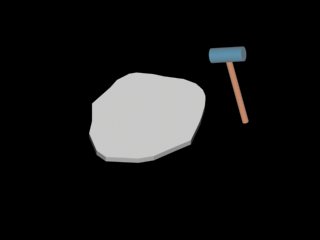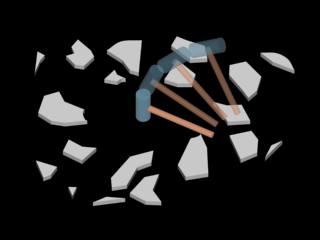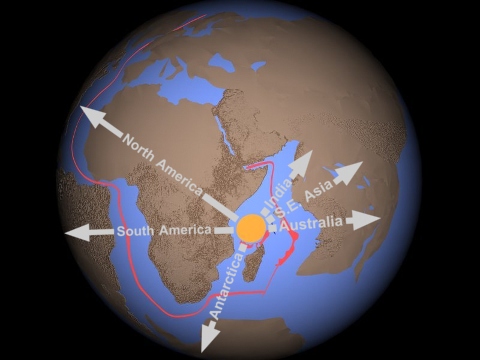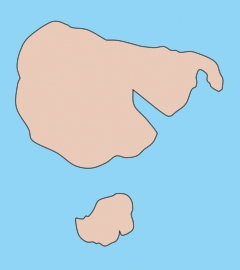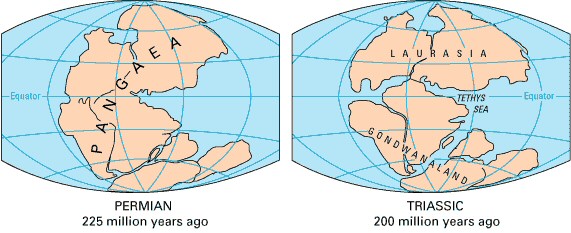 |
What does this first-order evidence imply?
|
|
To illustrate, if you hit a slab of ice hard enough with a big enough hammer, the ice shatters and the pieces slide away from the blow...
and high velocity impacts expand explosively in the target
The meteorite impact was the hammer blow, and the continental crust was the slab of ice.
Surprising? Sure - but it is where the evidence leads. Hiding In Plain Sight When scientists think they already have the answer, it is easy for them to miss something important. Take dinosaur fossils, for example, which have been studied for 200 years. Assistant Professor of Paleontology Mary Schweitzer (North Carolina State University) removed the minerals from the fossilized femur of a Tyrannosaurus rex thought to be 68 million years old, and was left with pliable, reddish material, like soft tissue. She "found structures that look like the blood vessels and cells that help renew bones. She also found reddish circles that resemble the blood cells found in modern-day birds." "Scientists never found the tissue before, Schweitzer said, because they did not look. Conventional wisdom told them that organic material must decay within 100,000 years and that fossils are merely minerals that filled in spots where animals were buried." "She also has found structures resembling what she saw in the T-rex remains in other dinosaur fossils." The findings were later confirmed by Schweitzer's discovery of proteins and tissue from a hadrosaur fossil thought to be 80 million years old. For
over 60 years, scientists have not looked for alternatives
to plate tectonics despite its mounting problems. It is no surprise that they
have again missed what is hiding in plain sight. Schweitzer, Mary Higby, Jennifer L. Wittmeyer, John R. Horner. 2007. Soft tissue and cellular preservation in vertebrate skeletal elements from the Cretaceous to the present. Proceedings of the Royal Society B, Vol. 274, pp. 183-197. Schweitzer, Mary H., et. al. 1 May 2009. Biomolecular Characterization and Protein Sequences of the Campanian Hadrosaur B. canadensis. Science, Vol. 324, 626-631. Here is the reconstructed Shock Dynamics protocontinent
compared to the Plate Tectonics assemblage
Estimated time to reach present positions: Plate Tectonics - about 200 million years Shock Dynamics - about 26 hours (based on a shear wave propagation speed of 150 m/s) with ongoing creep from Earth-Moon interaction
|

